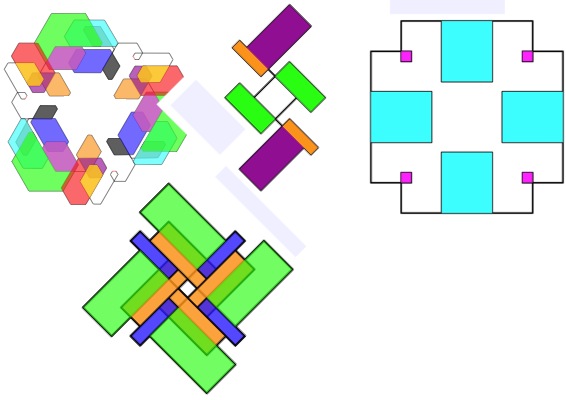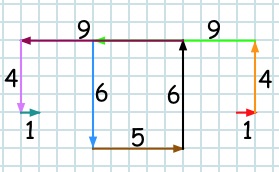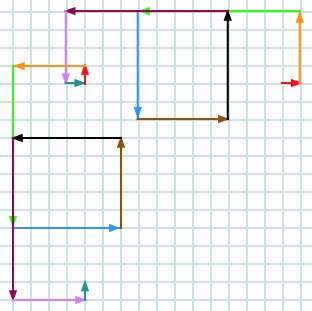Copyright © University of Cambridge. All rights reserved.
'The Numbers Give the Design' printed from https://nrich.maths.org/
Show menu
Why do this problem?
This activity engages the pupils in a simple geometric construction that has the potential to generate enthralling designs. Children who use Logo or control robots like Roamer or Pixie might like to explore in a different way without the need for geometric drawings. The task offers the learners the opportunity to vary their input,
observe the effects, and begin to make predictions and perhaps generalisations. You could think of the sequence of instructions both as a sequence of actions (turn $90^\circ$ and then go forward the specified amount) and as a compound action, namely as a single action that is to be repeated over and over.
Possible approach
Show the designs and ask the children what it is that they see or what strikes them about the images.
Reveal how they are constructed so simply from lines and turning right angles. Discussion can then focus on the choice of numbers that repeat themselves. What sequences might they like to try?
Once everyone has tried out a number of different sequences, you could encourage children to 'tweak' one of their sequences. Can they predict what difference their 'tweaking' will make to their design? They could then test their ideas.
The resulting designs would make a lovely display and children could be involved in writing the description of how the patterns were produced. It may also be possible for learners to make some general statements about the designs.
Key questions
What can you see?
Tell me about your sequence of numbers.
Which parts do you like/dislike?
What could you change?
Can you make any predictions about your new pattern before you draw it?
Possible extension
Pupils can select a random set of numbers to use and see their effect, then adjust the numbers in a particular way for the next design they try.
Possible support
Some pupils may need some help with the drawing of straight lines accurately. Those that want to pursue turning by different amounts might find isometric paper helpful.


